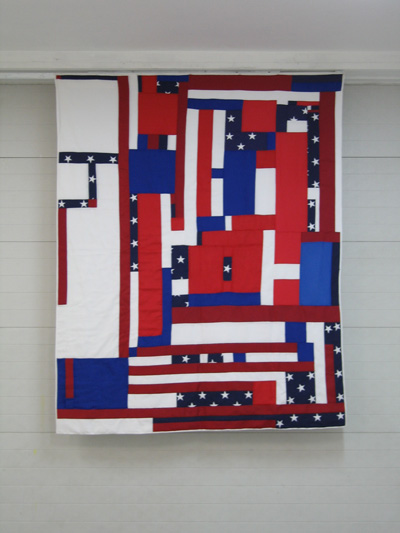




The Unwanted Land
Museum Beelden aan Zee
Den Haag, NL
The Unwanted Land opened on October 22 and is now on view until February 13, 2011 at Museum Beelden aan Zee in Den Haag, NL with Tiong Ang, Dirk de Bruyn, David Bade, Sonya van Kerhoff, Rudi Struik and Renée Ridgway.
These installations utilize stagings, videos and performances to investigate emigration, immigration, integration and finally disintegration – the apparent loss of an appropriated umbrella Dutch identity. (The Unwanted Land) Dutchness as an identity, a construction formulated by non-indigenous Dutch elements, uses the VOC (Dutch East Indian Company) in India as a conceptual paradigm. Its undertakings and undoings are still visible today. (The Wanted Land)
The cultural exchange that occurred 350 years ago on the Malabar Coast between the colonisers and the colonised remains significant. During this early contact a former Dutch governor (Commodore Odatha a.k.a. Hendrik van Reede tot Drakenstein) collaborated with Ayurvedic (a traditional Indian system for holistic healing) doctors, assisted by botanists, translators and artisans to produce the Hortus Malabaricus, a 12-volume work printed in Amsterdam between 1678-1693 that illustrates around 700 medicinal plants and explains their workings.
To refresh this historical connection and provide opportunity for contemplation, relaxation and participation, massages by an Ayurvedic practitioner and consultations with an Ayurvedic doctor via Skype are available on certain weekends. (A study into (un)becoming Dutch- Part I and II) Please see the agenda for exact dates of free massages.
A catalogue is available with texts by Kitty Zijlmans, Rashid Novaire, Chris Keulemans, Dineke Huizinga a.o.
On January 12 at 19:30 Pieter Baas, former director of the Herbarium (Naturalis) will give a lecture about the Hortus Malabaricus.
Financial support: The Netherlands Foundation for Visual Arts, Design and Architecture, Museum Beelden aan Zee, VSB Fonds, Stroom Den Haag
Thanks to: Rick van Amersfoort, Simon Ferdinando, Thomas Punnen & family, Cibil John, Suresh Karipoottu, Hugo s’Jacob, Annamma Spudich, K.K.N. Kurup, Om Prakash, K.J. Krishnakumar, Christopher Edward Walton, Darshan Shankar, Jan-Frits Veldkamp, K J Sohan, James Hadlent Gunther, Joseph Donald D’Souza, Om Prakash, Monolita Chatterjee, Ivan Da Costa, Christopher Edward Walton, Anjana Singh, Louis Joachim Hendriks, Meghala, Babu, Rowan, The National Herbarium department of the NCB-Naturalis, Hortus Botanicus Leiden, Rishi’s Wellness, Foundation for Revitalisation of Local Health Traditions, Bangalore, Dutch Embassy New Delhi
Photos by Thomas Lenden






